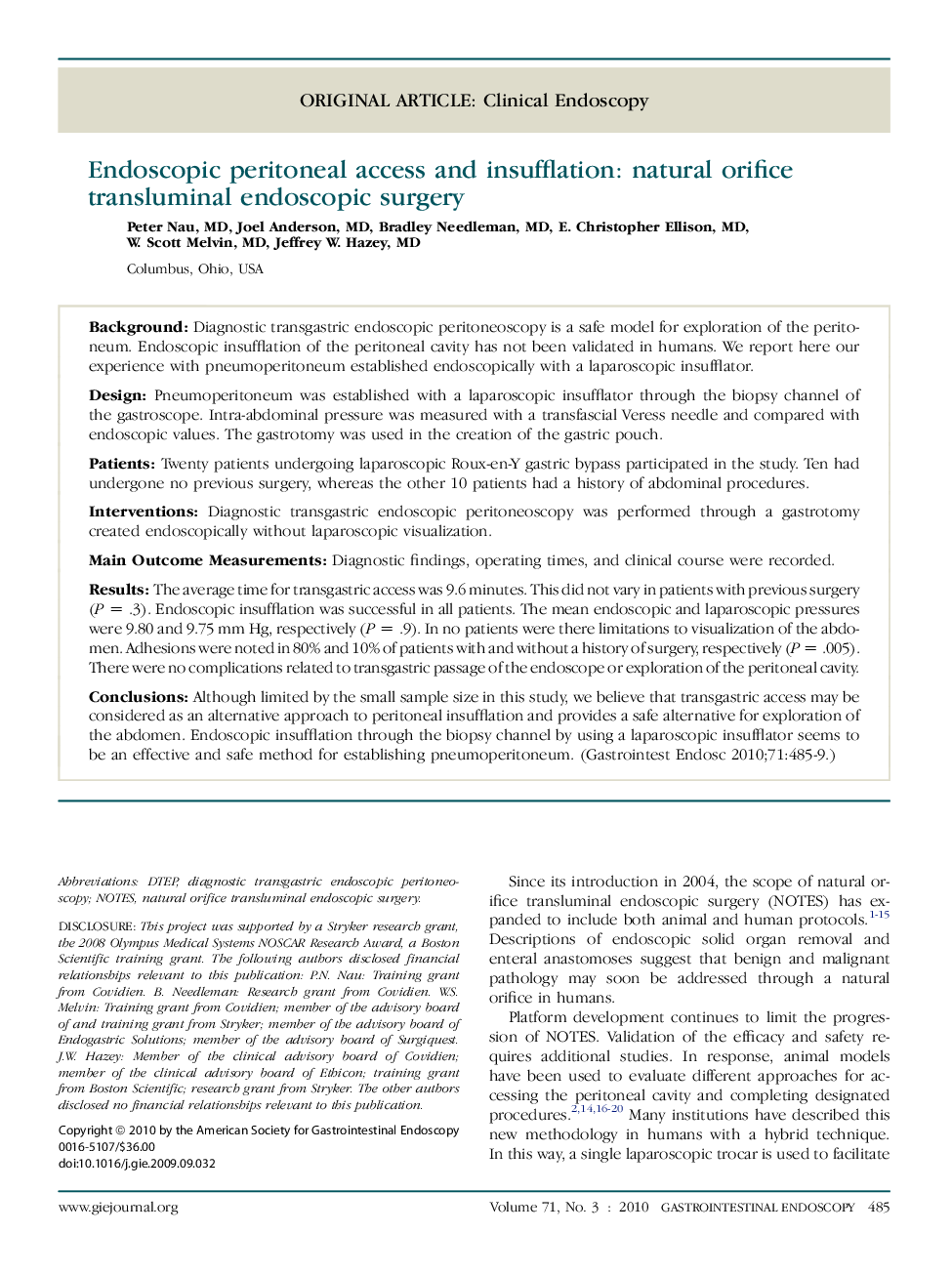| Article ID | Journal | Published Year | Pages | File Type |
|---|---|---|---|---|
| 3307326 | Gastrointestinal Endoscopy | 2010 | 5 Pages |
BackgroundDiagnostic transgastric endoscopic peritoneoscopy is a safe model for exploration of the peritoneum. Endoscopic insufflation of the peritoneal cavity has not been validated in humans. We report here our experience with pneumoperitoneum established endoscopically with a laparoscopic insufflator.DesignPneumoperitoneum was established with a laparoscopic insufflator through the biopsy channel of the gastroscope. Intra-abdominal pressure was measured with a transfascial Veress needle and compared with endoscopic values. The gastrotomy was used in the creation of the gastric pouch.PatientsTwenty patients undergoing laparoscopic Roux-en-Y gastric bypass participated in the study. Ten had undergone no previous surgery, whereas the other 10 patients had a history of abdominal procedures.InterventionsDiagnostic transgastric endoscopic peritoneoscopy was performed through a gastrotomy created endoscopically without laparoscopic visualization.Main Outcome MeasurementsDiagnostic findings, operating times, and clinical course were recorded.ResultsThe average time for transgastric access was 9.6 minutes. This did not vary in patients with previous surgery (P = .3). Endoscopic insufflation was successful in all patients. The mean endoscopic and laparoscopic pressures were 9.80 and 9.75 mm Hg, respectively (P = .9). In no patients were there limitations to visualization of the abdomen. Adhesions were noted in 80% and 10% of patients with and without a history of surgery, respectively (P = .005). There were no complications related to transgastric passage of the endoscope or exploration of the peritoneal cavity.ConclusionsAlthough limited by the small sample size in this study, we believe that transgastric access may be considered as an alternative approach to peritoneal insufflation and provides a safe alternative for exploration of the abdomen. Endoscopic insufflation through the biopsy channel by using a laparoscopic insufflator seems to be an effective and safe method for establishing pneumoperitoneum.
